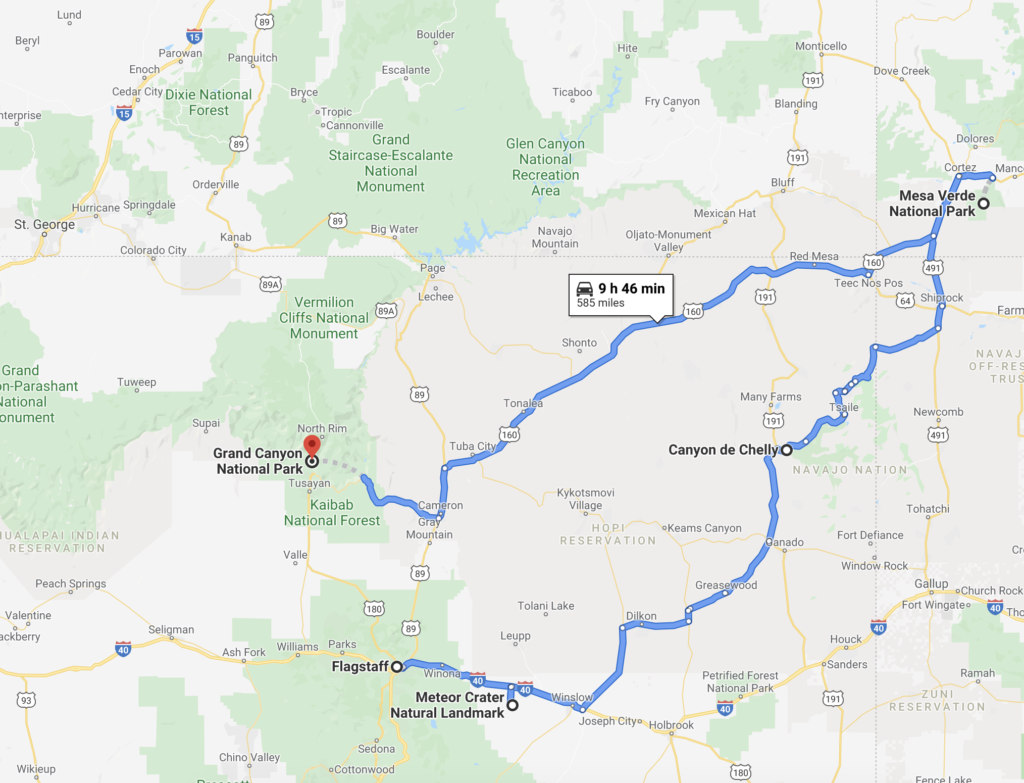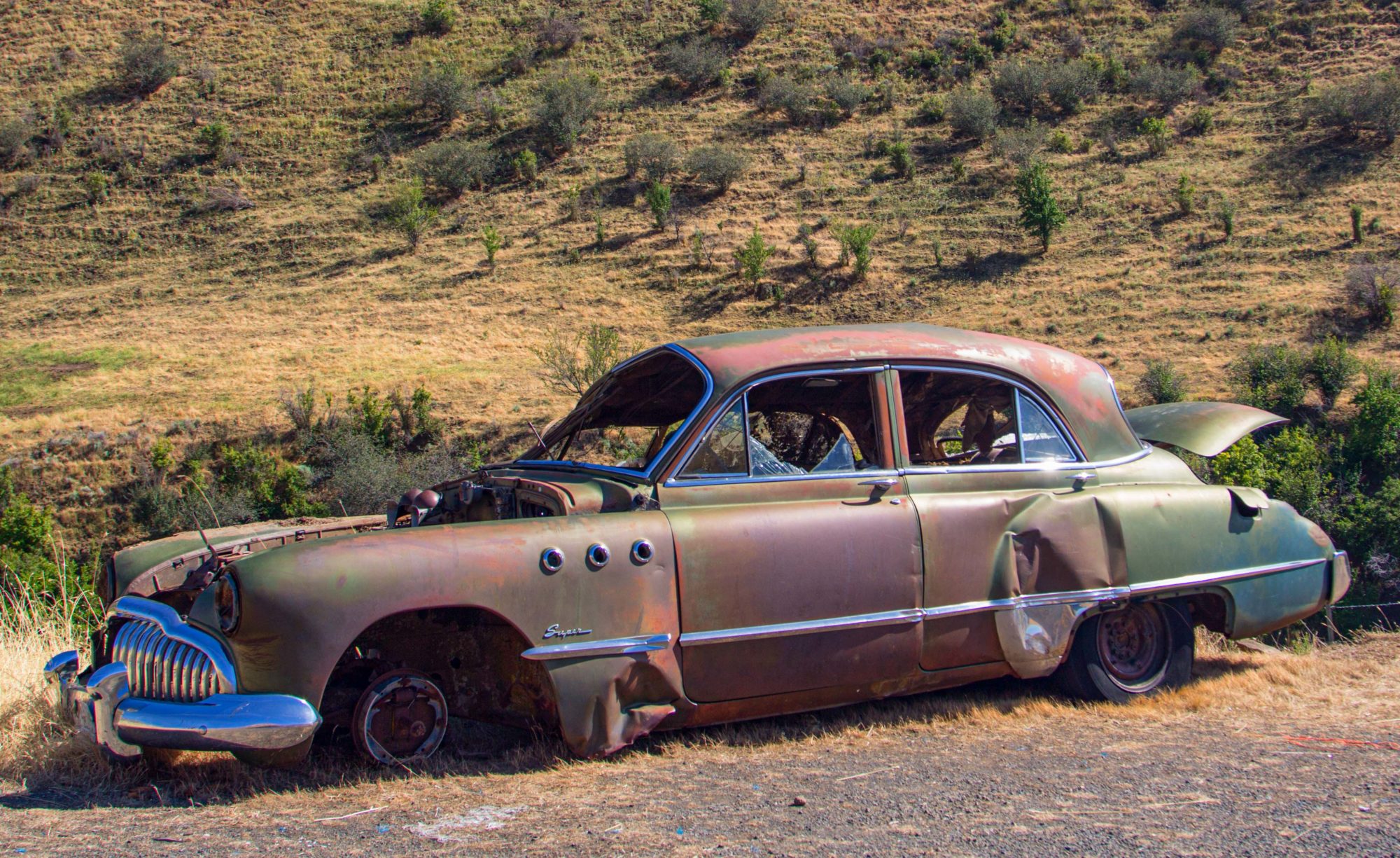Cross Country (Part Five)
From New Mexico into Arizona we visited dwellings in the cliffs of natives who survived harsh conditions in this dry western beautiful land. We still had more places to see. Our desert trek continued as we turned northeast from Flagstaff.
One site on our list of places to visit was Meteor Crater. It was created during the time the land was inhabited by wooly mammoths and giant ground sloths. A meteor hit the earth traveling at approximately 29,000 mph, the impact similar to a nuclear bomb blast. We grew up hearing stories of our Great Grandparents’ trek from New Mexico to Montana in 1895-96. Some of the roads we traveled were along the same route. When the family passed near Meteor Crater in 1895, Uncle Ed and Uncle Dolph took a side road to see the sight. So did we! It was quite impressive.
As we drove further, desert rose to small hills. We entered the realm of ancient trees turned to stone, the Petrified Forest. A series of events made conditions right to create stone from wood. Fallen trees and branches were buried by flooded river sediments and blanketed with volcanic ash. Trees went through the process of petrification, wood turning to stone. Some of the petrified trees are colorful and contain various crystals of a myriad of colors, showing off the grain of the wood. I can’t even imagine how all the forces of nature came together to form such a work of art. Adjoining the Petrified Forest is the Painted Desert. The various hues and colors stretch for miles as mounds of soft pastel shades, and formations of colorful strata seems to erupt from the barren ground. These preserved areas were favorites of my mother, second only to the Badlands, which she called “God’s Cathedral.”
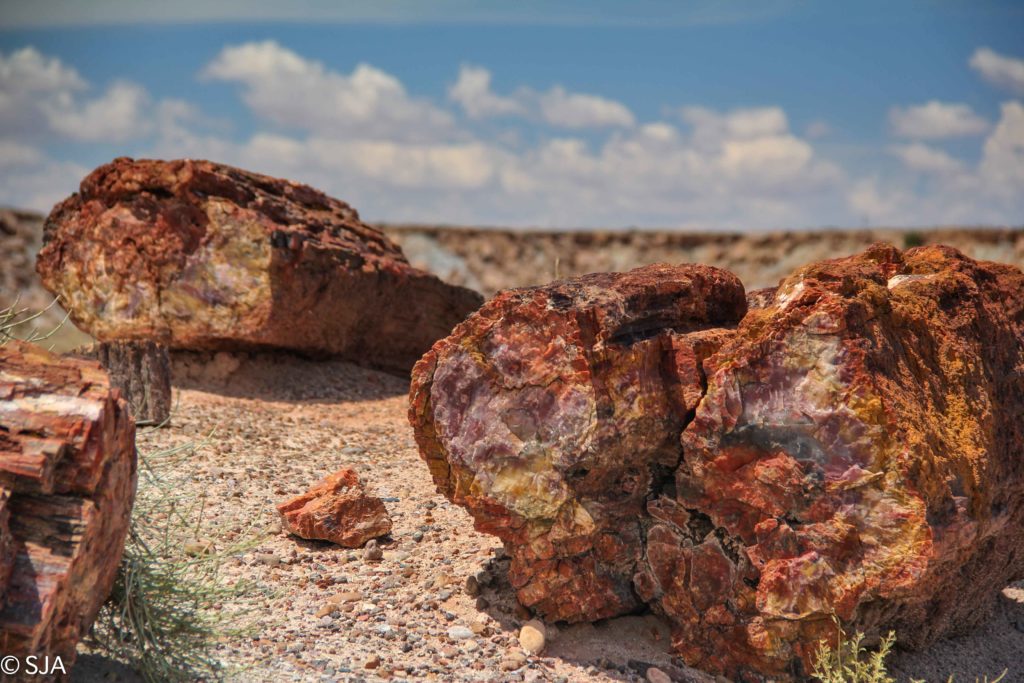
Petrified Forest 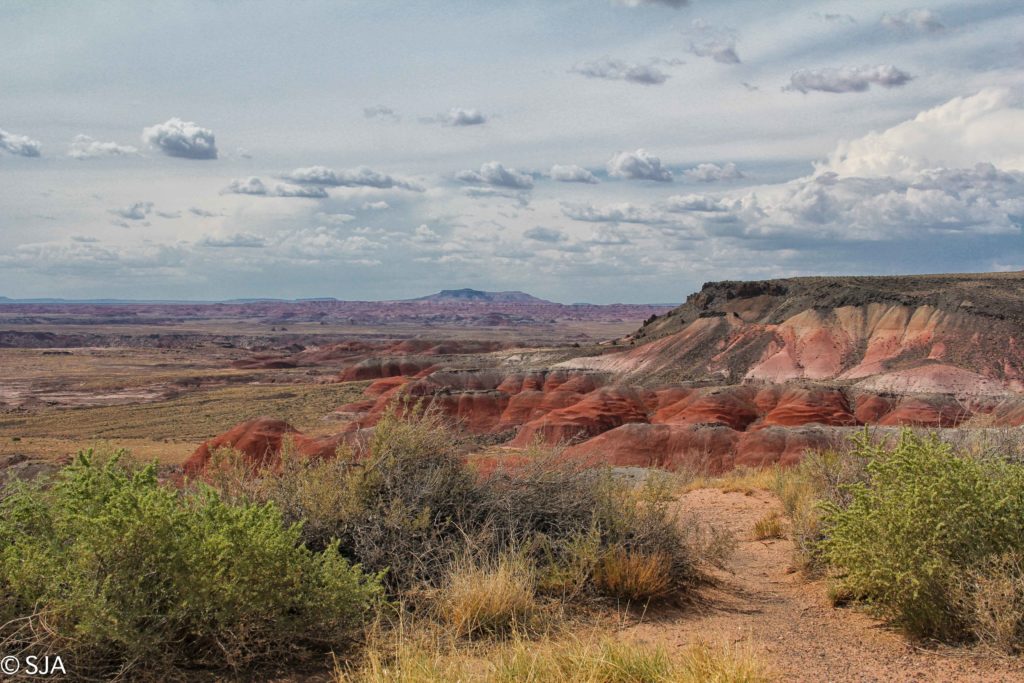
Painted Desert
We rode further into another unique landscape like we had not seen before – Canyon deChelly National Monument. The canyons were cut from streams flowing from the Chuska Mountains. What a fascinating place! Steep red sandstone cliffs stood as regal sentries on these Navajo tribal lands. The towering red walls seemed to form a barrier of protection for the Navajo families who still inhabit their tribal home. Canyon walls that protect the dwellings in the cliffs looked like freshly polished red cedar, exposing every grain of the rich red tones. The ruins from the Native Americans who lived here continue to be preserved. On the canyon floor surrounded by the cliffs was a hogan, a traditional dwelling of the Navajo people. That piqued my interest. The hogan was round and covered with red mud. It traditionally opens to the east to get the morning sun and to receive good blessings. The canyon is one of the longest continuously inhabited landscapes in North America.
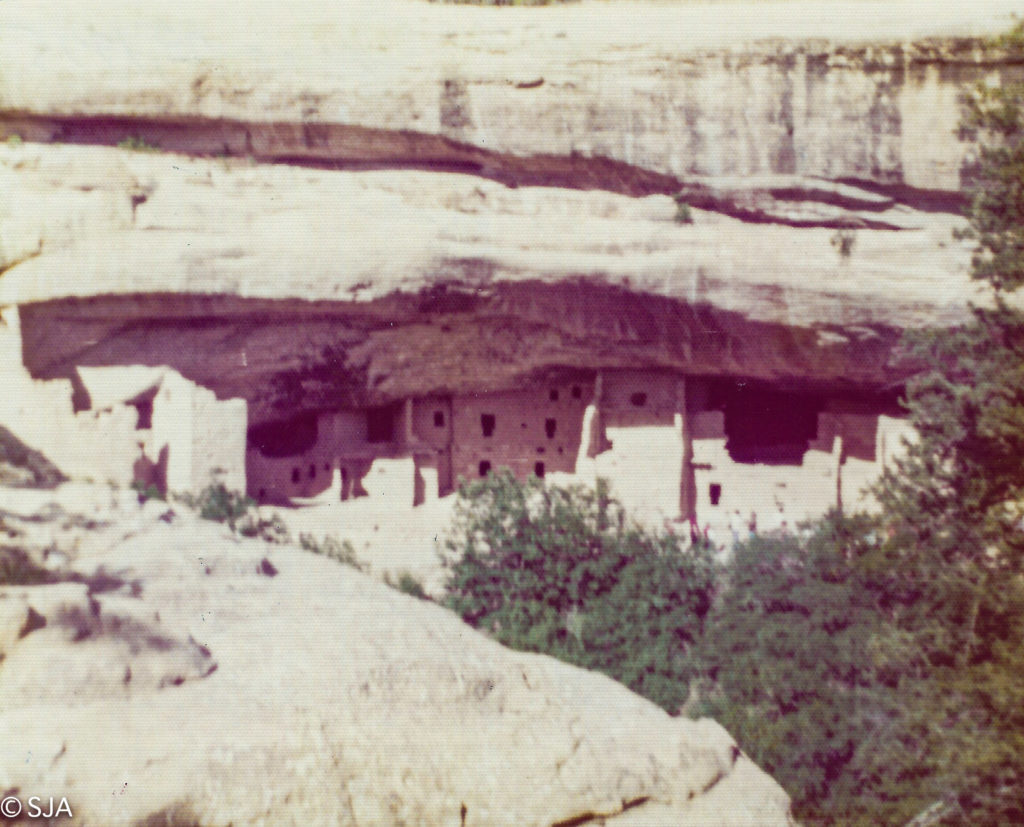
Spruce House, Mesa Verde National Park
We entered New Mexico again and drove north through the Navajo Nation into Southwest Colorado to Mesa Verde National Park. The park was established in 1906 to preserve the heritage of the ancestral Pueblo people who lived in the area for over seven hundred years. There are nearly five thousand archaeological sites protected in the park, including at least six hundred cliff dwellings. Theses ancients’ homes are some of the best preserved in the United States. Just standing there looking high in the cliffs at the homes of these ancient Cliff Dwellers brought a sense of awe. I tried to imagine them descending ladders through the roofs to their homes. Pueblo women laid vegetables out to dry in the sun while some ground corn into meal. They harvested wild plants to add to their diet that included squash, maize, beans and wild game. The women also wove baskets and made pottery.
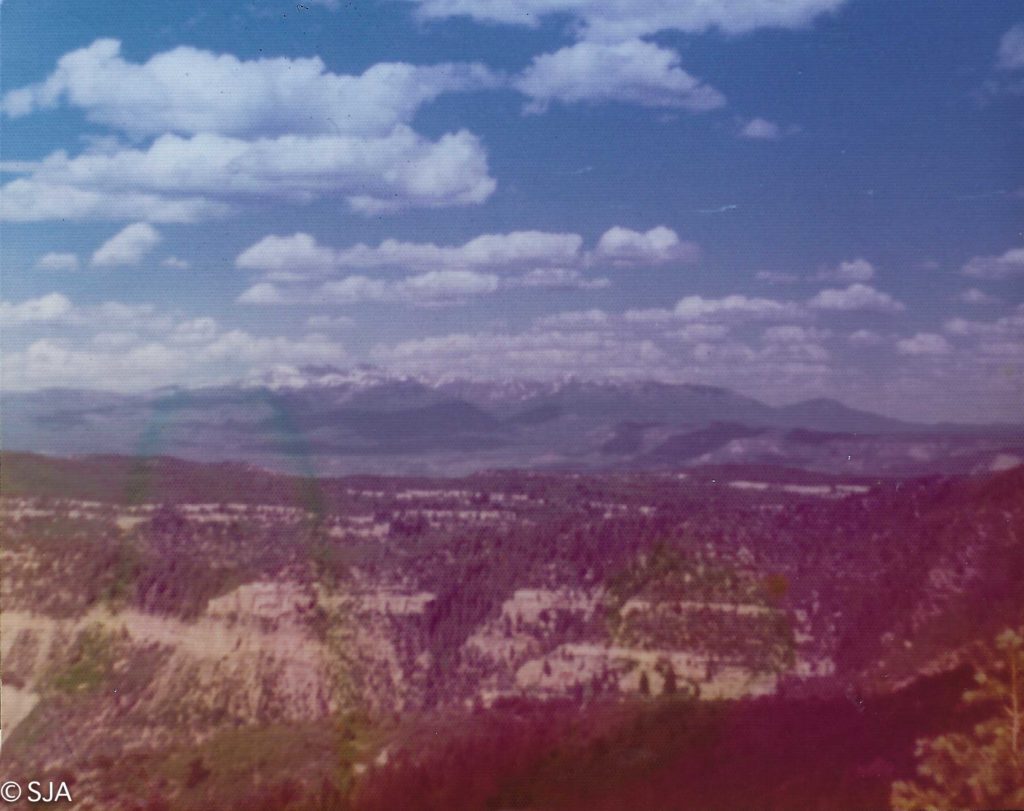
Sleeping Ute Mountain
The view from Mesa Verde was spectacular in every direction. In the distance the Sleeping Ute Mountain rested lazily seemingly unconcerned that the ancient people had gone. We made our way to Four-Corners which is the quadripoint where Arizona, Colorado, New Mexico and Utah meet. A dirt devil blew across the desert kicking up dust and debris. We enjoyed the performance as the miniature tornado twirled and danced with the desert grasses.
By the time we reached the Grand Canyon, we were hot and tired. The roads and canyon were infested with tourists. We could take no more! We took a picture and drove on, skirting around travelers, dodging cars and finally breathing a sigh of relief as we left the colorful canyon and millions of people behind.
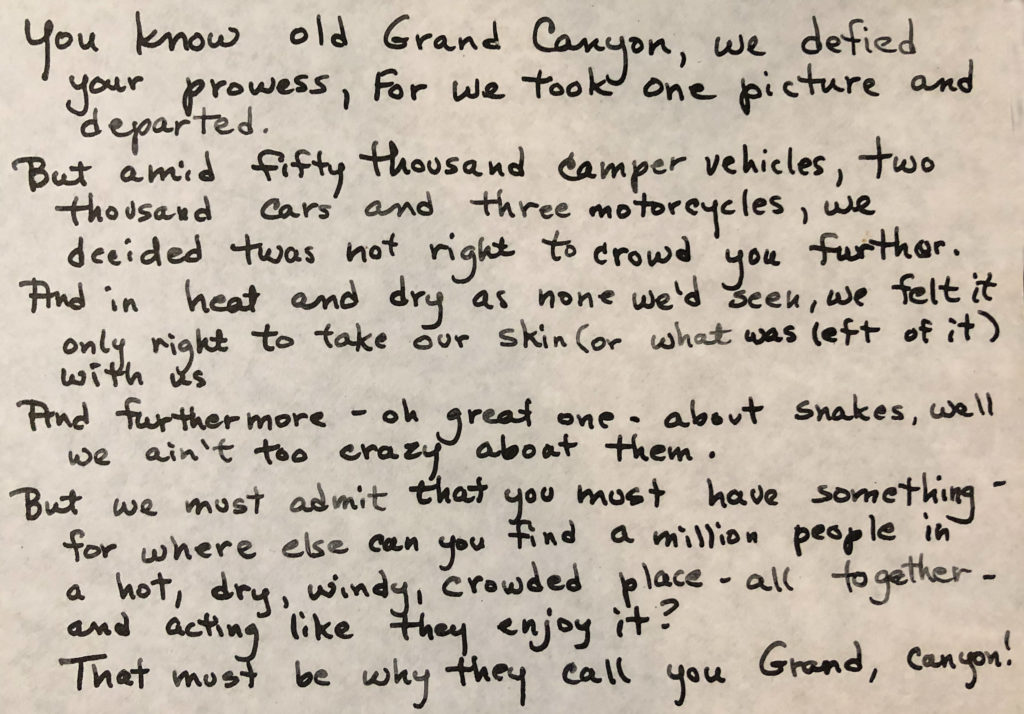
Poem written by my sister
